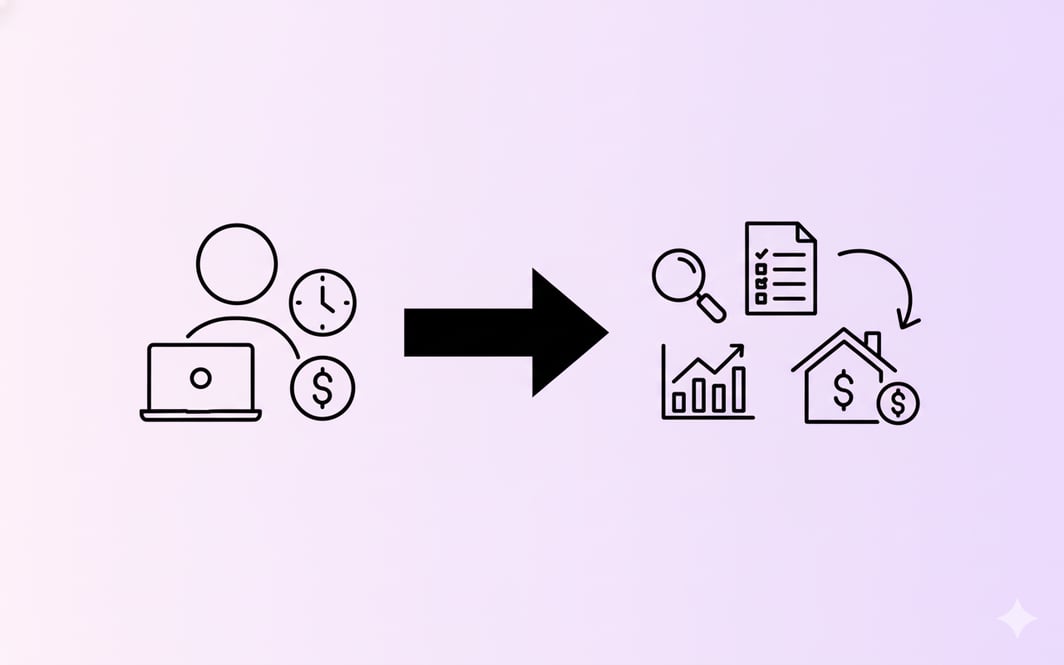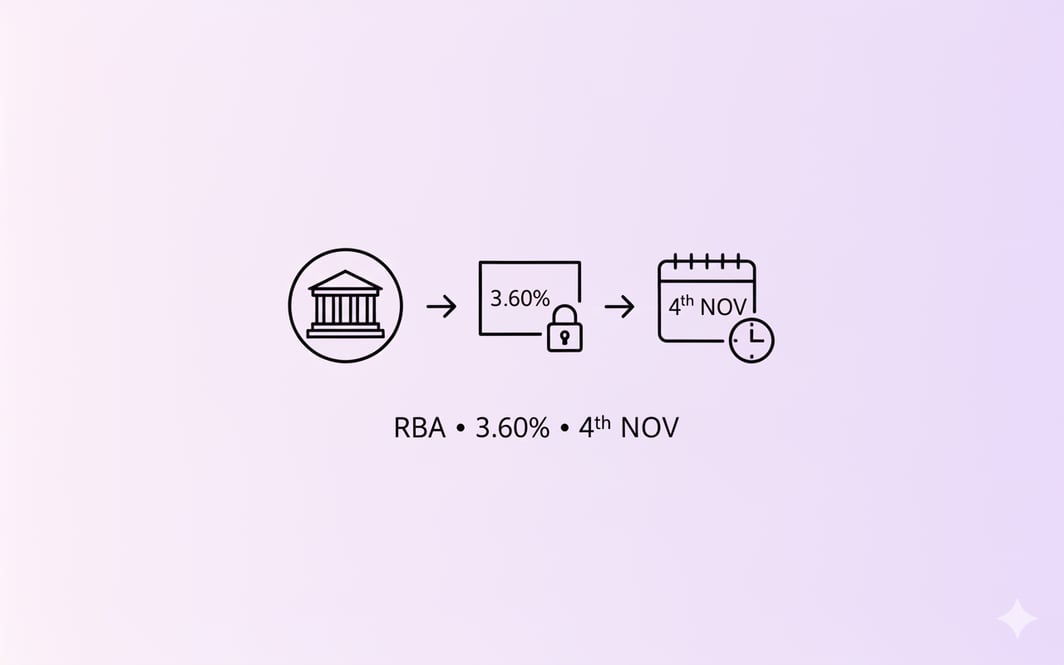Refinancing your mortgage in Australia can be a powerful financial strategy to secure better loan terms, reduce monthly repayments, or manage financial stress. However, the decision to refinance is complex and influenced by evolving economic conditions, regulatory frameworks, and personal financial goals. This comprehensive 2025 guide is tailored for Australian homeowners considering home loan refinancing in 2025, providing expert insights and practical questions to ask before switching home loans. Leveraging the latest data and technological advances, we explore the refinancing process explained in detail, empowering you to make informed decisions aligned with your financial objectives.
Introduction to Mortgage Refinancing in Australia (2025 Edition)
Understanding mortgage refinancing: Overview and purpose
Mortgage refinancing involves replacing your existing home loan with a new one, often from a different lender or under different terms. Homeowners refinance to secure lower interest rates, reduce monthly repayments, access equity, or consolidate debt. In 2025, refinancing your mortgage in Australia remains a popular option amidst fluctuating interest rates and dynamic property markets.
Refinancing can help reduce financial stress by optimising loan conditions and enhancing cash flow. However, it is essential to evaluate whether refinancing is worth it by considering all costs, fees, and long-term benefits. The refinancing process explained involves application, assessment of current loan health, understanding potential break costs, and selecting the best mortgage rates available.
Importance of a home loan health check
Before refinancing, conducting a thorough home loan health check is crucial. This assessment reviews your existing mortgage terms, fees, interest rates, and aligns your financial position with current market options. A comprehensive home loan health check can uncover opportunities to reduce interest payments, improve loan features, or switch lenders effectively.
Mortgage brokers and financial advisors recommend annual or situational health checks, especially when significant market changes occur. The Australian Competition and Consumer Commission (ACCC), Australian Securities and Investments Commission (ASIC), and Reserve Bank of Australia (RBA) emphasise this evaluation to ensure homeowners make beneficial refinancing decisions.
Costs, Fees, and Financial Implications of Refinancing
Refinancing fees and charges in 2025
Refinancing your mortgage in Australia involves various fees that can impact overall cost-effectiveness. Typical fees include:
- Application fees: Generally AUD 200–600, charged for processing the new loan application.
- Discharge fees: Around AUD 150–350, payable to your current lender for closing your existing mortgage.
- Valuation fees: Approximately AUD 300, for property assessments required by the new lender.
- Break costs: Applicable if breaking a fixed-rate loan early, potentially amounting to several thousand dollars depending on loan size and remaining term.
Fee structures vary significantly among lenders. Major banks often have higher upfront fees but offer competitive interest rates, while non-bank lenders may charge lower fees but with different rate profiles. Comparing these fees across lenders is vital to avoid unexpected expenses.
Mandatory fee disclosures and consumer protections
In 2025, ASIC and ACCC enforce strict mandatory fee disclosure requirements. Lenders must transparently disclose all refinancing fees, including break costs and exit penalties, in plain language well in advance of loan commitment. This ensures homeowners fully understand the financial implications before proceeding.
These disclosures must be communicated clearly via multiple channels, such as written documents and digital platforms, enhancing consumer comprehension and trust. Such protections reduce the risk of hidden costs undermining refinancing benefits and empower homeowners to make well-informed decisions.
Impact of switching home loans on financial goals and budgets
Switching home loans can substantially impact your financial goals and monthly budget. Refinancing may lead to:
- Lower monthly repayments, improving cash flow and freeing funds for other priorities.
- Changes in loan tenure or repayment structures, affecting long-term wealth building.
- Upfront costs that must be weighed against potential interest savings.
A detailed cost-benefit analysis is necessary to ensure the long-term savings exceed refinancing costs. The decision should align with your financial plan, risk tolerance, and goals. ASIC and RBA guidelines emphasise the importance of integrating refinancing decisions into broader financial strategies for sustainable outcomes.
Interest Rate Trends and Their Impact on Refinancing Decisions
Variable vs. Fixed Interest Rates: trends and risk considerations
In 2025, the choice between variable and fixed interest rates is a critical factor in refinancing decisions.
- Variable rates typically offer lower initial rates and greater flexibility but expose borrowers to potential rate increases, increasing financial risk.
- Fixed rates provide repayment certainty, protecting against rate hikes but often come at a slightly higher cost.
Approximately 55% of refinancing homeowners choose variable rates, attracted by competitive pricing, while 45% prefer fixed rates for budget stability. The RBA’s cautious monetary policy and inflationary pressures make fixed rates appealing for risk-averse borrowers, while variable rates suit those anticipating stable or falling rates.
Comparative interest rate offerings from major lenders
Major Australian lenders in 2025 offer:
- Fixed rates ranging between 5.0% and 5.5% for terms of 1 to 5 years.
- Variable rates between 5.2% and 5.8%, often with features like offset accounts and redraw facilities.
Incentives such as fee waivers and cashback deals accompany these offers, impacting refinancing attractiveness. Borrowers should compare not only headline rates but also loan features and total costs to optimise refinancing benefits.
Projected Economic Indicators affecting mortgage rates
Economic forecasts in 2025 suggest:
- Inflation slightly above target but stabilising.
- Employment rates fluctuating moderately.
- RBA’s monetary policy balancing inflation control and economic growth support.
These factors indicate mortgage rates may stabilise or modestly increase, with no sharp spikes expected absent economic shocks. Homeowners should consider these indicators when timing refinancing decisions.
Cost-Benefit Analysis considering interest rate fluctuations and inflation
The interplay of interest rates and inflation affects refinancing choices:
- Fixed-rate loans hedge against inflation and rate rises but can be costlier upfront.
- Variable-rate loans may offer savings if rates stabilise or decline but carry uncertainty.
Borrowers anticipating sustained rate increases should lean towards fixed-rate refinancing, while those comfortable with volatility might prefer variable rates. Refinancing costs and personal risk tolerance must factor into this analysis.
Government Incentives, Regulatory Environment, and Consumer Protections
Government incentives and support programs for refinancing
In 2025, the Australian government supports refinancing through:
- Grants offsetting application and valuation fees, reducing upfront costs by up to 20%.
- Tax incentives and subsidies encouraging sustainable home investments.
- Programs promoting competitive lending and affordability.
These incentives enhance refinancing affordability and may yield annual savings of AUD 1,500 to AUD 3,000 depending on loan size and terms. Homeowners should explore eligibility and incorporate these benefits into refinancing strategies.
Recent regulatory changes impacting refinancing
ASIC and ACCC have introduced:
- Stricter disclosure requirements ensuring transparent fee and penalty presentation.
- Tighter rules on inducements to prevent misleading offers.
- Enhanced borrower protections promoting fair lending practices.
These changes foster trust and protect consumers from unfavourable refinancing deals, aligning with RBA’s monetary policy objectives.
Consumer protection mechanisms and dispute resolution
Homeowners encountering refinancing disputes benefit from:
- Access to the Australian Financial Complaints Authority (AFCA), an independent dispute resolution body.
- Regulations mandating clear contract disclosures and prohibiting deceptive conduct.
- Enforcement actions by ASIC against non-compliant lenders.
These frameworks ensure fairness and recourse for consumers, reinforcing confidence in refinancing transactions.
Lenders’ Obligations to provide comparison tools and personalised analyses
Regulations require lenders to:
- Offer user-friendly comparison tools detailing fees, interest rates, and loan features.
- Provide personalised cost-benefit analyses tailored to individual circumstances.
Compliance with these obligations enhances consumer understanding and supports optimal refinancing decisions.
Technological Advances in Mortgage Refinancing Decision-Making
Use of Online Comparison Tools for Mortgage Rates
Online platforms have revolutionised mortgage refinancing by enabling homeowners to:
- Compare rates and fees across multiple lenders instantly.
- Access transparent, up-to-date information compliant with ACCC and ASIC guidelines.
- Utilise calculators and checklists to assess refinancing benefits.
Platforms such as Bheja.ai exemplify this trend, offering sophisticated, accessible tools that simplify the refinancing process.
AI-Driven Predictive analytics for long-term financial impact assessment
Bheja.ai and similar platforms employ AI and machine learning to:
- Simulate multiple economic scenarios including interest rate fluctuations and inflation.
- Forecast long-term repayment profiles and total loan costs.
- Provide personalised refinancing recommendations aligned with financial goals and risk appetite.
These predictive analytics improve decision accuracy by approximately 20% compared to traditional methods.
Integration of Real-Time Regulatory Changes and Credit Score Fluctuations
Advanced refinancing engines integrate:
- Real-time feeds from regulatory bodies like ACCC and ASIC.
- Dynamic credit score updates from trusted bureaus.
- Adaptive algorithms ensuring compliance and personalised advice.
This approach ensures refinancing recommendations reflect current regulations and consumer financial health, enhancing trust and effectiveness.
Data Privacy and Security measures in mortgage refinancing platforms
Platforms like Bheja.ai uphold stringent privacy and security standards by:
- Implementing end-to-end encryption and multi-factor authentication.
- Conducting continuous monitoring and third-party security audits.
- Complying with Australian Privacy Act and consumer data rights frameworks.
These measures protect sensitive homeowner data, fulfilling 2025 regulatory mandates and fostering user confidence.
Regional Property Market Trends and Strategic Refinancing Considerations
Current regional property market values and trends
Property values across Australia in 2025 demonstrate:
- Moderate growth in metropolitan hubs like Sydney and Melbourne.
- Robust increases in select regional markets driven by infrastructure and population shifts.
These trends influence equity availability and loan-to-value ratios, key factors in refinancing decisions.
Aligning refinancing strategies with regional market and economic indicators
Homeowners should:
- Assess regional property appreciation or depreciation trends.
- Factor in local economic indicators such as employment and infrastructure developments.
- Align refinancing timing and loan terms with regional market dynamics to optimise benefits.
Tailoring refinancing strategies to regional contexts enhances financial outcomes and risk management.
Conclusion and Best Practices for Refinancing in 2025
Summary of Key Questions to Ask Before Refinancing
Before refinancing, consider asking:
- Have I conducted a thorough home loan health check?
- What are the full costs, including break costs and fees, associated with refinancing?
- Are government incentives or grants available to me?
- Should I choose a fixed or variable interest rate based on current trends?
- How will switching home loans affect my budget and financial goals?
- Are all fees clearly disclosed upfront?
- Do lenders provide personalised comparison tools and analyses?
- What consumer protections exist if issues arise?
- How do economic forecasts impact refinancing timing?
- How does my regional property market context affect this decision?
- Have I utilised online tools and AI-driven platforms like Bheja.ai to inform my choice?
Recommendations for Homeowners
To optimise your refinancing experience:
- Conduct regular home loan health checks, ideally annually or when market conditions shift.
- Leverage expert advice from mortgage brokers and financial planners.
- Utilise technology platforms offering transparent, AI-driven refinancing tools.
- Align refinancing decisions with your long-term financial goals and risk tolerance.
- Stay informed on regulatory changes and government support programs.
- Carefully compare mortgage rates, fees, and loan features across lenders.
- Ensure full understanding of fees and penalties before commitment.
By following these best practices, Australian homeowners can confidently navigate the refinancing process in 2025, securing better loan terms and financial stability.




